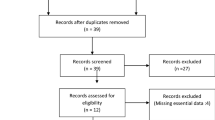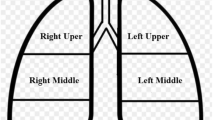Abstract
Purpose
To compare lung shunt fraction (LSF) prior to Y-90 radioembolization calculated using planar imaging versus SPECT/CT in patients with hepatocellular carcinoma (HCC).
Methods
A single institution retrospective analysis of technetium-99m macroaggregated albumin (Tc-99m MAA) LSF studies for 293 consecutive patients with HCC between 2013 and 2018 was performed. LSF using planar imaging (PLSF) was compared to retrospectively calculated LSF using SPECT/CT (SLSF) via semiautomated segmentation using MIM v.6.9. Sub-analyses of patients were performed based on PLSF range, tumor size, BCLC stage, and Child–Pugh (C–P) score. Mean LSF absolute discrepancy between sub-groups was analyzed. Comparisons were performed using paired t tests and linear regression analysis.
Results
Mean PLSF, 8.27%, was greater than mean SLSF, 3.27% (p < 0.001). When categorizing patients by PLSF ranges of < 10%, 10–19.9%, and ≥ 20%, PLSF remained greater than SLSF in all subgroups (p’s < 0.001). Patients with PLSF ≥ 20% had a greater absolute discrepancy with SLSF (13.31%) compared to patients with PLSF < 20% (4.74%; p < 0.0001). LSF absolute discrepancy was greater for patients with a maximum liver tumor size ≥ 5.0 cm (5.59%) compared to a liver tumor size < 5.0 cm (4.40%; p = 0.0076). For all BCLC grades and C–P scores, PLSF was greater than SLSF. A greater LSF discrepancy existed for patients with a worse C–P score (C–P A: 4.78%, C–P B/C: 6.12%; p = 0.0081), but not BCLC stage (0/A/B: 4.87%, C: 4.56%; p = 0.5993).
Conclusion
In patients with HCC, SLSF is significantly lower compared to PLSF, with a greater discrepancy among patients with a PLSF ≥ 20%, tumor size ≥ 5 cm, and worse C–P score.
Level of Evidence
Level 3, Retrospective Study.

Similar content being viewed by others
References
Camacho JC, Moncayo V, Kokabi N, Reavey HE, Galt JR, Yamada K, et al. 90Y radioembolization: multimodality imaging pattern approach with angiographic correlation for optimized target therapy delivery. RadioGraphics. 2015;35(5):1602–18. https://doi.org/10.1148/rg.2015140314.
Bhangoo MS, Karnani DR, Hein PN, Giap H, Knowles H, Issa C, et al. Radioembolization with Yttrium-90 microspheres for patients with unresectable hepatocellular carcinoma. J Gastrointest Oncol. 2015;6(5):469–78. https://doi.org/10.3978/j.issn.2078-6891.2015.056.
Gordon AC, Gabr A, Riaz A, Uddin OM, Abouchaleh N, Ali R, et al. Radioembolization super survivors: extended survival in non-operative hepatocellular carcinoma. Cardiovasc Intervent Radiol. 2018;41(10):1557–655. https://doi.org/10.1007/s00270-018-2008-y.
Wehrenberg-Klee E, Gandhi RT, Ganguli S. Patient selection and clinical outcomes of Y90 in hepatocellular carcinoma. Tech Vasc Intervent Radiol. 2019;22(2):70–3. https://doi.org/10.1053/j.tvir.2019.02.006.
Kooby DA, Egnatashvili V, Srinivasan S, Chamsuddin A, Delman KA, Kauh J, et al. Comparison of yttrium-90 radioembolization and transcatheter arterial chemoembolization for the treatment of unresectable hepatocellular carcinoma. JVIR. 2010;21(2):224–30. https://doi.org/10.1016/j.jvir.2009.10.013.
Allred JD, Niedbala J, Mikell JK, Owen D, Frey KA, Dewaraja YK. The value of (99m)Tc-MAA SPECT/CT for lung shunt estimation in (90)Y radioembolization: a phantom and patient study. EJNMMI Res. 2018;8(1):50. https://doi.org/10.1186/s13550-018-0402-8.
Leung WT, Lau WY, Ho SK, Chan M, Leung NW, Lin J, et al. Measuring lung shunting in hepatocellular carcinoma with intrahepatic-arterial technetium-99m macroaggregated albumin. J Nuclear Med. 1994;35(1):70–3.
Dittmann H, Kopp D, Kupferschlaeger J, Feil D, Groezinger G, Syha R, et al. A prospective study of quantitative SPECT/CT for evaluation of lung shunt fraction before SIRT of liver tumors. J Nuclear Med. 2018;59(9):1366–72. https://doi.org/10.2967/jnumed.117.205203.
Kao YH, Magsombol BM, Toh Y, Tay KH, Chow PK, Goh AS, et al. Personalized predictive lung dosimetry by technetium-99m macroaggregated albumin SPECT/CT for yttrium-90 radioembolization. EJNMMI Res. 2014;4:33. https://doi.org/10.1186/s13550-014-0033-7.
Vouche M, Habib A, Ward TJ, Kim E, Kulik L, Ganger D, et al. Unresectable solitary hepatocellular carcinoma not amenable to radiofrequency ablation: multicenter radiology-pathology correlation and survival of radiation segmentectomy. Hepatology (Baltimore, MD). 2014;60(1):192–201. https://doi.org/10.1002/hep.27057.
Strigari L, Sciuto R, Rea S, Carpanese L, Pizzi G, Soriani A, et al. Efficacy and toxicity related to treatment of hepatocellular carcinoma with 90Y-SIR spheres: radiobiologic considerations. J Nuclear Med. 2010;51(9):1377–85. https://doi.org/10.2967/jnumed.110.075861.
Srinivas SM, Natarajan N, Kuroiwa J, Gallagher S, Nasr E, Shah SN, et al. Determination of radiation absorbed dose to primary liver tumors and normal liver tissue using post-radioembolization (90)Y PET. Front Oncol. 2014;4:255. https://doi.org/10.3389/fonc.2014.00255.
Demirelli S, Erkilic M, Oner AO, Budak ES, Gunduz S, Ozgur O, et al. Evaluation of factors affecting tumor response and survival in patients with primary and metastatic liver cancer treated with microspheres. Nucl Med Commun. 2015;36(4):340–9. https://doi.org/10.1097/mnm.0000000000000257.
Kennedy A, Nag S, Salem R, Murthy R, McEwan AJ, Nutting C, et al. Recommendations for radioembolization of hepatic malignancies using yttrium-90 microsphere brachytherapy: a consensus panel report from the radioembolization brachytherapy oncology consortium. Int J Radiat Oncol Biol Phys. 2007;68(1):13–23. https://doi.org/10.1016/j.ijrobp.2006.11.060.
Sarfaraz M, Kennedy AS, Lodge MA, Li XA, Wu X, Yu CX. Radiation absorbed dose distribution in a patient treated with yttrium-90 microspheres for hepatocellular carcinoma. Med Phys. 2004;31(9):2449–533. https://doi.org/10.1118/1.1781332.
Yu N, Srinivas SM, Difilippo FP, Shrikanthan S, Levitin A, McLennan G, et al. Lung dose calculation with SPECT/CT for (9)(0)Yittrium radioembolization of liver cancer. Int J Radiat Oncol Biol Phys. 2013;85(3):834–9. https://doi.org/10.1016/j.ijrobp.2012.06.051.
Gill H, Bian J, Gabriel M, Molvar C, Wagner R, Halama J. 99mTc-MAA SPECT/CT imaging for quantitative assessment of lung shunt fraction prior to 90Y transarterial radioembolization. J Nuclear Med. 2019;60(supplement 1):265.
Zaharakis A, Leveque F, Backiel J, Tursi G, Palestro C, Nichols K. SPECT/CT for estimating hepatopulmonary shunting in selective internal radiotherapy: a phantom study. J Nucl Med. 2014;55(supplement 1):1496.
Elschot M, Nijsen JF, Lam MG, Smits ML, Prince JF, Viergever MA, et al. ((9)(9)m)Tc-MAA overestimates the absorbed dose to the lungs in radioembolization: a quantitative evaluation in patients treated with (1)(6)(6)Ho-microspheres. Eur J Nuclear Med Mol Imaging. 2014;41(10):1965–75. https://doi.org/10.1007/s00259-014-2784-9.
Deipolyi AR, Iafrate AJ, Zhu AX, Ergul EA, Ganguli S, Oklu R. High lung shunt fraction in colorectal liver tumors is associated with distant metastasis and decreased survival. JVIR. 2014;25(10):1604–8. https://doi.org/10.1016/j.jvir.2014.06.019.
Ludwig JM, Ambinder EM, Ghodadra A, Xing M, Prajapati HJ, Kim HS. Lung shunt fraction prior to yttrium-90 radioembolization predicts survival in patients with neuroendocrine liver metastases: single-center prospective analysis. Cardiovasc Intervent Radiol. 2016;39(7):1007–144. https://doi.org/10.1007/s00270-016-1323-4.
Dendy MS, Ludwig JM, Kim HS. Predictors and prognosticators for survival with Yttrium-90 radioembolization therapy for unresectable colorectal cancer liver metastasis. Oncotarget. 2017;8(23):37912–22. https://doi.org/10.18632/oncotarget.16007.
Antkowiak M, Gabr A, Das A, Ali R, Kulik L, Ganger D, et al. Prognostic role of albumin, bilirubin, and ALBI scores: analysis of 1000 patients with hepatocellular carcinoma undergoing radioembolization. Cancers (Basel). 2019;11(6):879. https://doi.org/10.3390/cancers11060879.
Elsayed M, Martin JG, Dabrowiecki A, Goldman DT, Faraj R, McMahon JT, et al. Tc-99m-MAA lung shunt fraction before Y-90 radioembolization is low among patients with non-hepatocellular carcinoma malignancies. Nucl Med Commun. 2019;40(11):1154–7. https://doi.org/10.1097/mnm.0000000000001089.
Gaba RC, Zivin SP, Dikopf MS, Parvinian A, Casadaban LC, Lu Y, et al. Characteristics of primary and secondary hepatic malignancies associated with hepatopulmonary shunting. Radiology. 2014;271(2):602–12. https://doi.org/10.1148/radiol.14131969.
Funding
This study was not supported by any funding.
Author information
Authors and Affiliations
Corresponding author
Ethics declarations
Conflict of interest
Nima Kokabi receives research support from SIRTEX Medical Ltd. The remaining authors have no financial disclosures.
Ethical Approval
For this type of study, formal consent is not required.
Informed Consent
Informed consent was obtained from all individual participants included in the study.
Consent for Publication
Consent for publication was obtained for every individual person’s data included in the study.
Additional information
Publisher's Note
Springer Nature remains neutral with regard to jurisdictional claims in published maps and institutional affiliations.
Rights and permissions
About this article
Cite this article
Elsayed, M., Cheng, B., Xing, M. et al. Comparison of Tc-99m MAA Planar Versus SPECT/CT Imaging for Lung Shunt Fraction Evaluation Prior to Y-90 Radioembolization: Are We Overestimating Lung Shunt Fraction?. Cardiovasc Intervent Radiol 44, 254–260 (2021). https://doi.org/10.1007/s00270-020-02638-8
Received:
Accepted:
Published:
Issue Date:
DOI: https://doi.org/10.1007/s00270-020-02638-8




